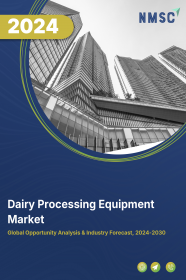
Finland Automated Truck/Trailer Loading System Market by Type (Ground-Based and Overhead), by Automation (Semi-Automatic and Fully Automatic), by Load Type (Fluid Loads, Containers, Totes, Pallets, and Wheeled Carts/Cages), by Truck/Trailer Type (Non-Modified and Modified) – Global Opportunity Analysis and Industry Forecast, 2024–2030
Industry: Construction & Manufacturing | Publish Date: 15-Feb-2025 | No of Pages: 126 | No. of Tables: 92 | No. of Figures: 57 | Format: PDF | Report Code : CM1701
US Tariff Impact on Finland ATLS Market
Trump Tariffs Are Reshaping Global Business
Market Definition
The Finland ATLS Market size was valued at USD 0.6 million in 2023, and is predicted to reach USD 1.3 million by 2030, at a CAGR of 11.0 % from 2024 to 2030.
An Automated Truck/Trailer Loading System (ATLS) represents a technology-driven approach to material handling, aiming to automate tasks involved in truck and trailer loading and unloading. Typically, ATLS consists of a conveyor system, loading dock, and control system. The conveyor system moves pallets or containers to the loading dock, where the control system manages the loading or unloading process. The primary goal of ATLS is to streamline and optimize logistics and supply chain operations by automating manual tasks related to handling goods during loading and unloading, thereby improving efficiency, safety, and productivity within warehouse and distribution center environments.
ATLS utilizes a blend of mechanical, conveyor, sensor, and control technologies to efficiently and accurately handle various types of cargo, including individual boxes, containers, pallets, and bulk goods. These systems seamlessly integrate into loading docks, warehouses, and distribution centers, contributing significantly to operational efficiency gains, increased throughput, and enhanced safety by reducing the reliance on manual labor in the loading process. Additionally, these solutions can be customized to meet the specific requirements of different industries, cargo types, and existing infrastructure, ensuring adaptability and efficiency enhancements across diverse logistical scenarios.
The Rising Labour Costs Propel the ATLS Market Growth
Rising labour costs drive the adoption of ATLS across various industries in the region. As labour expenses escalate, particularly in labour-intensive sectors like manufacturing and logistics, companies seek cost-effective and efficient solutions. The challenge of finding and retaining a skilled workforce for tasks such as loading and unloading trucks grows more difficult.
In response, ATLS emerges as a robust solution, reducing reliance on human labour and ensuring consistent and reliable performance. Operating continuously without breaks, these systems enhance efficiency and generate cost savings, making them an appealing choice for industries seeking to optimize operations amid high labour expenses.
The Increasing Adoption of Automation in Warehouses Boosts the Market
The extensive adoption of automated solutions in warehouses and the logistics sector is accelerating the growth and advancement of the ATLS industry.
This adoption seamlessly integrates with ATLS technology as companies strive for comprehensive automation within their logistics and supply chain operations. Integrating ATLS with existing automation infrastructure, like conveyor systems and robotic material handling, greatly improves operational efficiency.
High Initial Costs Hampers the Growth of the Market
Numerous organizations encounter notable challenges when contemplating the adoption of ATLS, primarily due to the significant upfront expenses involved.
This factor serves as a constraint on market growth. The initial costs encompass acquiring technology, investing in infrastructure, addressing customization and integration expenses, conducting workforce training, engaging consulting services, and evaluating scalability options.
Adoption of Advance Technologies Creates Future Opportunities for the Market
Integrating artificial intelligence (AI), the Internet of Things (IoT), and predictive maintenance into ATLS is positioned to unlock significant growth opportunities for the market in the foreseeable future. AI dynamically enhances real-time loading and unloading operations by utilizing IoT data, thereby improving overall efficiency. Predictive Maintenance reduces downtime and unexpected repair costs while enhancing safety through IoT monitoring and AI-driven risk identification, thereby decreasing liability expenses.
This integration yields valuable data insights crucial for informed decision-making, provides customization and scalability options, and appeals to industries seeking innovative solutions. Consequently, these factors collectively pave the way for opportunities for market expansion.
Competitive Landscape
The Finland ATLS market comprises various market players, such as Joloda Hydraroll Limited, Actiw Ltd., Interroll Group, SSI Schaefer, KUKA AG, Jens S, Swisslog Holding AG, Dematic, Jungheinrich AG, Distri-Consulting Oy, and others.
Finland ATLS Market Key Segments
By Type
-
Ground-Based
-
Overhead
By Automation
-
Semi-automatic
-
Fully Automatic
By Load Type
-
Fluid Loads
-
Containers
-
Totes
-
Pallets
-
Wheeled Carts/Cages
By Truck/Trailer Type
-
Non-modified
-
Modified
By Loading System
-
Chain Conveyor System
-
Slat Conveyor System
-
Belt Conveyor System
-
Skate Conveyor System
-
Roller Track System
-
Loading Plate System
-
Others
By Industry Vertical
-
Aviation
-
Cement
-
Paper
-
FMCG
-
Post & Parcel
-
Automotive
-
Textile
-
Pharmaceutical
REPORT SCOPE AND SEGMENTATION:
|
Parameters |
Details |
|
Market Size in 2023 |
USD 0.6 Million |
|
Revenue Forecast in 2030 |
USD 1.3 Million |
|
Growth Rate |
CAGR of 11.0% from 2024 to 2030 |
|
Analysis Period |
2023–2030 |
|
Base Year Considered |
2023 |
|
Forecast Period |
2024–2030 |
|
Market Size Estimation |
Million (USD) |
|
Growth Factors |
|
|
Companies Profiled |
10 |
|
Market Share |
Available for 10 companies |
|
Customization Scope |
Free customization (equivalent up to 80 working hours of analysts) after purchase. Addition or alteration to country, regional, and segment scope. |
|
Pricing and Purchase Options |
Avail customized purchase options to meet your exact research needs. |
KEY PLAYERS
-
Joloda Hydraroll Limited
-
Actiw Ltd.
-
Interroll Group
-
SSI Schaefer
-
KUKA AG
-
Jens S
-
Swisslog Holding AG
-
Dematic
-
Jungheinrich AG
-
Distri-Consulting Oy

















 Speak to Our Analyst
Speak to Our Analyst




















